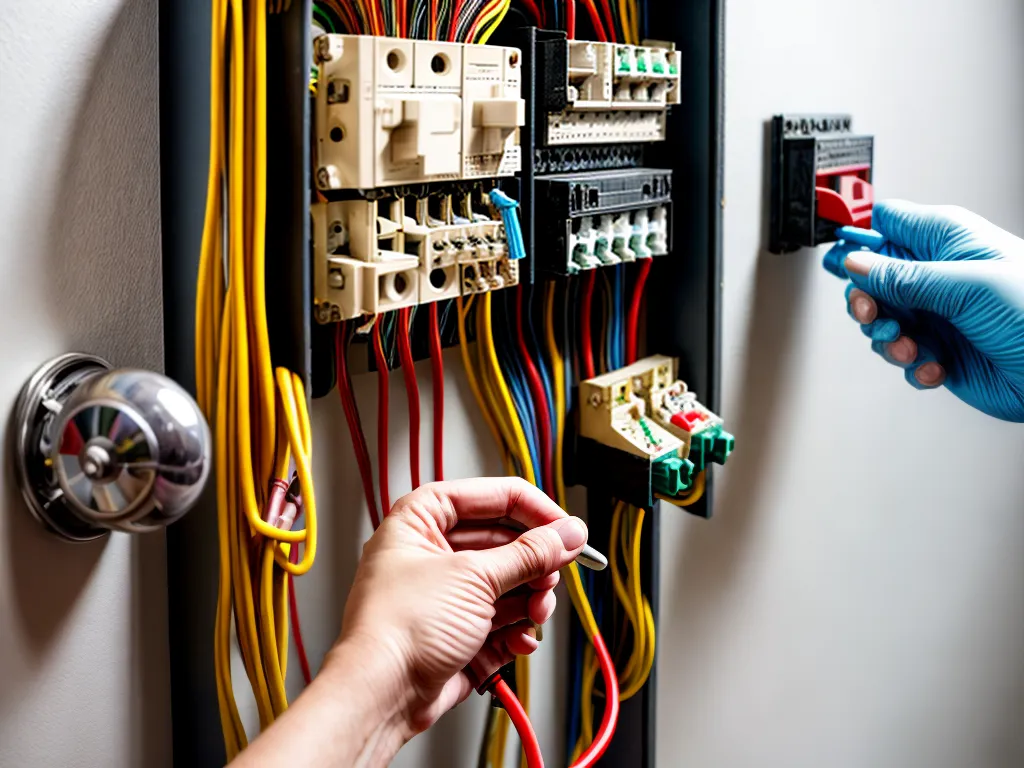
Updating Your Home's Knob and Tube Wiring to Meet Modern Safety Standards
I've been living in my older home for a few years now, and I've noticed some quirks with the electrical system that have me concerned. Upon doing some research, I discovered that my home likely still contains the original knob and tube wiring that was common in homes built before the 1950s. While this type of wiring was up to code when it was installed, it does not meet today's electrical safety standards and leaves me feeling uneasy. For my own peace of mind, and to bring my home up to modern safety standards, I've decided it's time to undertake the project of replacing the knob and tube wiring.
Understanding Knob and Tube Wiring and Its Risks
Knob and tube wiring consists of individual wires that are strung through the walls, attic, and crawlspaces. The wires are supported by ceramic knobs and separated from one another by tubes. While this system was sufficient for the electrical needs of older homes, it presents several safety hazards by today's standards:
-
Fire risk - The wiring is not grounded, and the old brittle insulation can crack or fray over time, exposing the conductors and increasing fire risk.
-
Overloading - Knob and tube wiring was designed for simpler electrical systems with fewer appliances. Today's homes have much greater electrical loads, which can overwhelm the older wiring.
-
Exposed wires - Rodents and insulation installation can disturb knob and tube wires, leaving conductors exposed. This poses electrocution and fire risks.
-
Lack of safety devices - Old systems lack modern safety features like circuit breakers. This leaves them prone to overheating and electrical arcing if wires are overloaded.
While I don't currently have any obvious signs of knob and tube failure, it seems wise to preemptively upgrade before problems occur.
Hiring an Electrician to Replace Knob and Tube Wiring
Upgrading home wiring is not a DIY project for an amateur. I'll be hiring a licensed electrician to replace the knob and tube wiring in my home. There are several steps to this process:
Evaluation
-
The electrician will do a thorough inspection of the existing wiring to map out the knob and tube locations.
-
They'll check the electrical panel to see if it needs upgrading to support additional circuits.
-
They'll look for any splices, additions, or changes made over the years and plan how to incorporate or replace these.
Installation
-
New wiring will be run through the walls from the panel to outlets and switches. The electrician will minimize disruption by using existing paths where possible.
-
Grounded NM (nonmetallic) cables will replace the old ungrounded knob and tube wiring for safety.
-
The electrical panel may need upgrading with new circuit breakers to support additional loads.
-
GFCI (ground fault circuit interrupter) outlets will be installed in kitchens, bathrooms and other locations to prevent electrocution.
Removal
-
Once new wiring is installed and connected, the electrician will remove any accessible old knob and tube wiring. This eliminates confusion down the road.
-
Some original wiring may be inaccessible and get left behind, which is acceptable as long as it is disconnected from the new electrical system.
Costs and Timing to Expect
Replacing the knob and tube wiring in an entire house is a major undertaking, so I'll need to plan time and budget accordingly. Here are some cost and timing estimates I've gathered:
-
Total costs can range from $2,000 to $15,000, depending on home size and complexity.
-
The job may take a few days to a few weeks to complete. Preparation work adds time.
-
Working one room or circuit at a time can spread out costs over time.
-
Prioritizing high-load areas like the kitchen first is a good cost-saving approach.
While wiring upgrades require a significant investment, the added safety and peace of mind are worth it. With proper planning and a qualified electrician, I'm looking forward to having an electrical system that's built to modern safety standards.